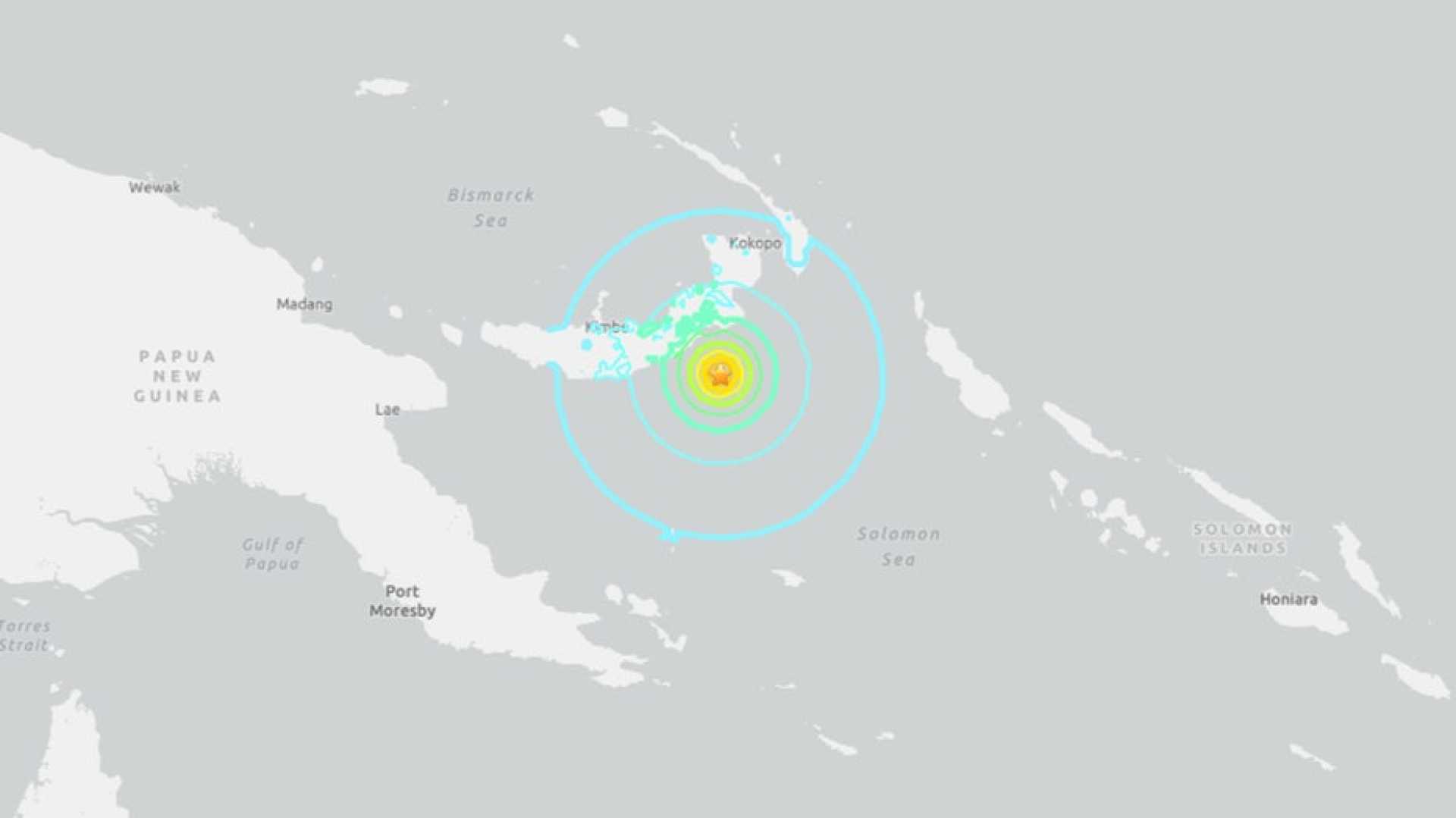News
Magnitude 6.9 Earthquake Strikes Papua New Guinea, Tsunami Warning Issued

KIMBE, Papua New Guinea — A powerful 6.9 magnitude earthquake struck near Papua New Guinea early Saturday morning, prompting a tsunami warning, according to the U.S. Geological Survey (USGS). The quake occurred at 6:04 a.m. Papua New Guinea time, centered approximately 121 miles southeast of Kimbe, the capital of West New Britain province.
The USGS initially reported the quake as a magnitude 7.2 before downgrading it to 6.9 after further evaluation. The earthquake had a shallow depth of about 6.2 miles.
In conjunction with the earthquake, the U.S. Tsunami Warning Center indicated hazardous waves could reach heights between 1 to 3 meters along the coastline of Papua New Guinea. Fortunately, the tsunami threat was canceled shortly after 7 p.m. ET on Friday, with no significant waves observed.
“Hazardous tsunami waves are forecast for some coasts,” stated the U.S. Tsunami Warning Center in its alert. No immediate reports of damage or injuries have emerged, despite the earthquake’s strength.
Geological experts highlighted that aftershocks are typical in such events. An aftershock registering a magnitude of 5.3 occurred following the initial quake. Aftershocks are commonly smaller earthquakes that follow larger quakes, though they can also be of equal or greater magnitude.
Papua New Guinea lies within the Pacific ‘Ring of Fire,’ a seismically active zone renowned for its frequent earthquakes and volcanic eruptions. This region contributes to about 90% of all earthquakes globally and is home to numerous active volcanoes.
The volcanic and tectonic activity in the Ring of Fire is driven by the constant movement of tectonic plates. As these plates interact, they build pressure that can lead to significant seismic events, including earthquakes and volcanic eruptions.
While the country is familiar with seismic activity, this event follows a particularly tragic incident. Just over a week prior, a 7.7 magnitude earthquake struck central Myanmar, resulting in over 3,300 deaths and extensive destruction.
The immediate response to the earthquake is ongoing as seismologists assess data to refine their understanding of the quake’s magnitude and potential impacts.
This remains a developing story as authorities continue to monitor the situation and gather more information.












